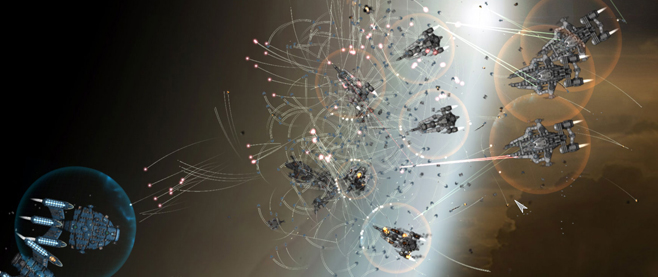
The Solus Project: Survival at its Fittest
I’m not the biggest fan of survival games. I really dig the idea of your own body posing a greater threat than any raging monster, but the loop of sating thirst and hunger just enough to go gather materials and craft them into tools to help you better sate thirst and hunger – that’s just never grabbed me. Nevertheless, I dabble with the occasional Terraria or Don’t Starve, hoping that this time will be different. Thanks to my latest adventure, it finally was.
The Solus Project isn’t like most open-world survival games. It’s not really open-world; the planet on which you’re stranded is split into discrete areas that run the gamut from narrow, linear caves to expansive archipelagos. Tying those areas together is a compelling mystery involving creepy, animate dolls and omniscient aliens. Given how incidental narrative normally is in the genre, it’s refreshing to have a reason to want to survive beyond just extending your play session. Food, water and shelter become more than just tools for delaying the inevitable; staying alive is the only way to piece together what happened on the supposedly uninhabited planet you’ve crashed on. Survival is no longer just its own reward.
The relationship between story and survival works the other way, too. The need to monitor vital signs and ration resources feeds back into the narrative, adding tangible urgency to your mission. Unlike the typical save-the-world video game scenario, you can’t simply potter around picking flowers while doom waits patiently for you to face it.
Every wasted second increases your chances of dehydration, hypothermia, or getting pummelled to death by a sporadic meteor shower. Self- preservation drives you to pursue your primary mission with a fervour consistent with the game’s premise, searching for escape as desperately as one really would if stranded on an alien planet. Consequently, you feel a greater sense of embodiment and investment in your virtual plight.
preservation drives you to pursue your primary mission with a fervour consistent with the game’s premise, searching for escape as desperately as one really would if stranded on an alien planet. Consequently, you feel a greater sense of embodiment and investment in your virtual plight.
Survival in The Solus Project might not be quite as demanding as DayZ or Rust, but it succeeds in selling the fear and tension of being alone in a foreign, foreboding environment. By simplifying the management of your basic needs, TSP also avoids the trap many survival games fall into with respect to exploration.
Often, casual roaming is discouraged through finite supplies and barren, repetitive environments; in TSP, though, you’re rewarded with stat-boosting relics for poking around in every nook and cranny. Wandering off willy-nilly still carries its fair share of danger, but not so much that it swaddles the joy of discovery.
Of the various dangers The Solus Project serves up, the most impressive by far are the weather effects. The blistering sun smoulders the surface of Gliese-6143-C, causing the world to shimmer like a mirage and forcing you to seek shade lest heat stroke overwhelm you. At night, storms rage with almighty wrath, bolts of lightning threatening to fry you to a crisp and voracious tornadoes tearing apart everything in their path.
The occasional meteor showers are especially stunning, knitting golden threads across the sky before striking the ground with a thunderous boom and a shockwave of diffuse glow. Just make sure you don’t gawk at the wondrous sight too long; if you get caught beneath a shooting star, no amount of wishing will save your hide.
Though not a traditional survival game, The Solus Project distils the genre to its essence and combines it with an engaging narrative to craft a tense, focused survival experience. It might not be as massive as No Man’s Sky, but it’s a world worth exploring nonetheless.





